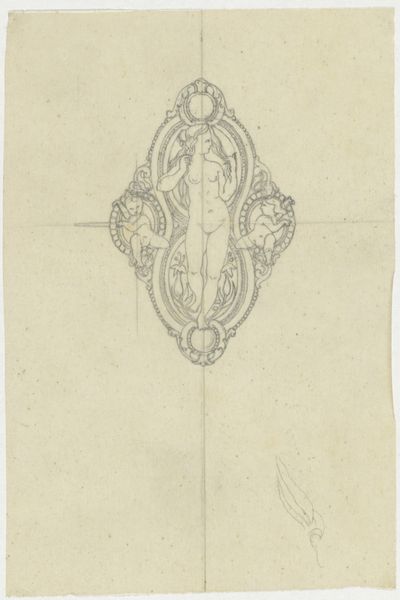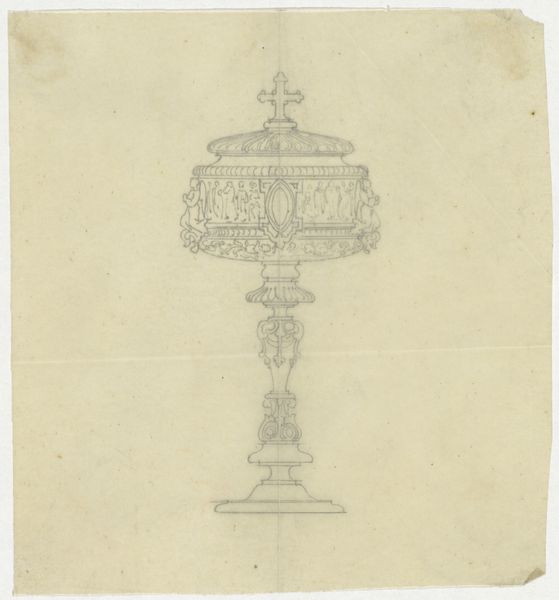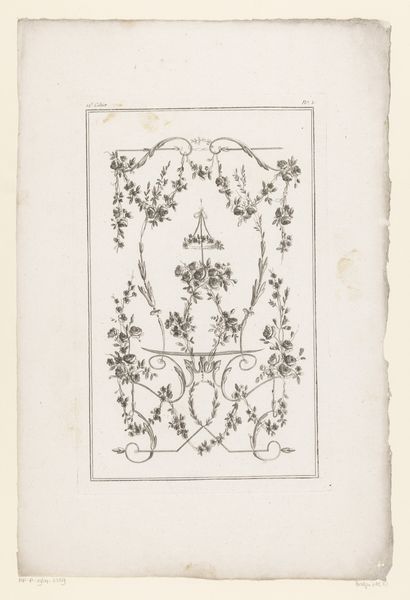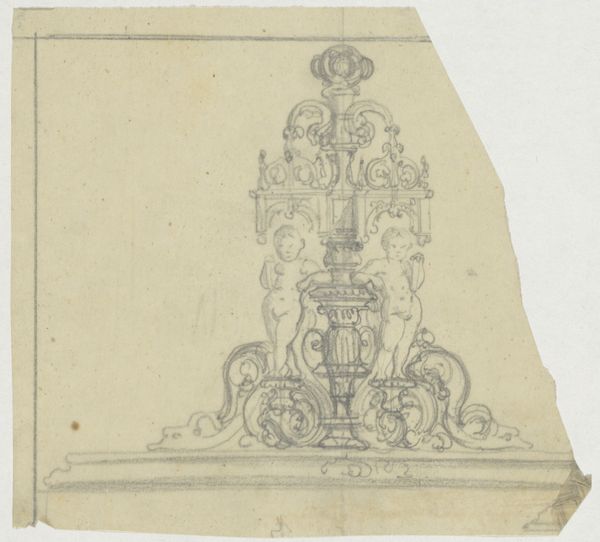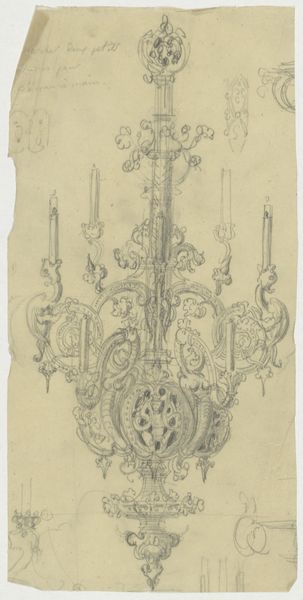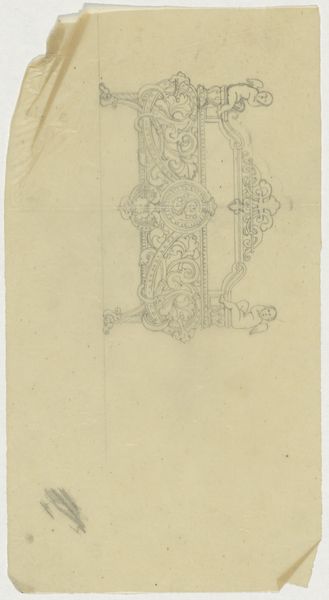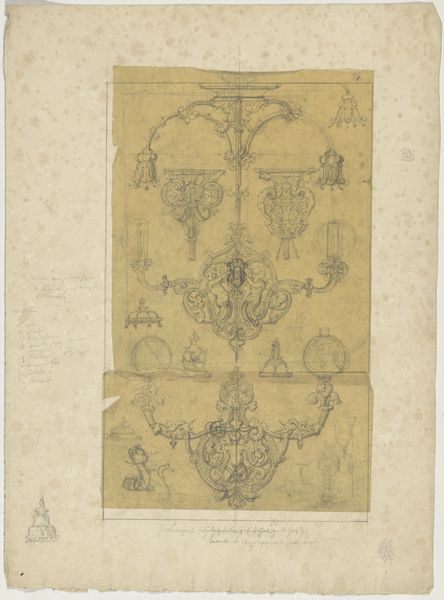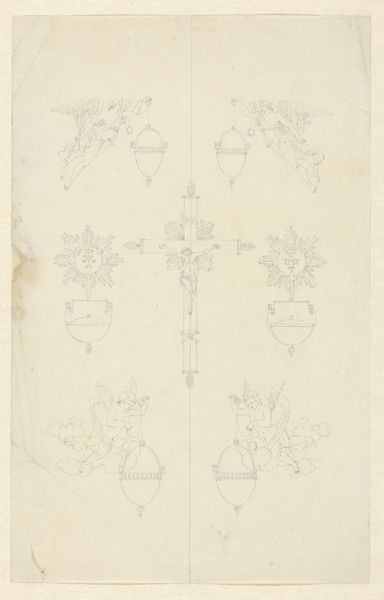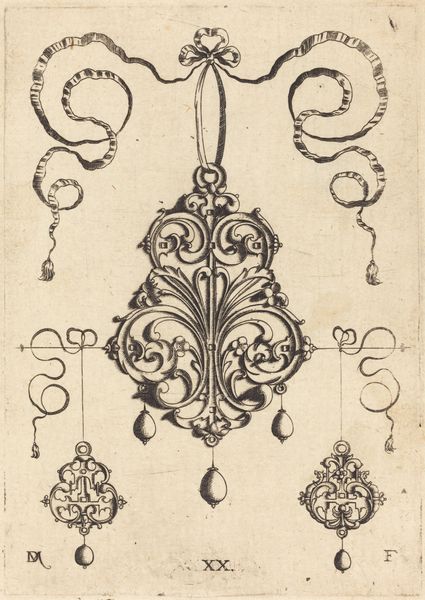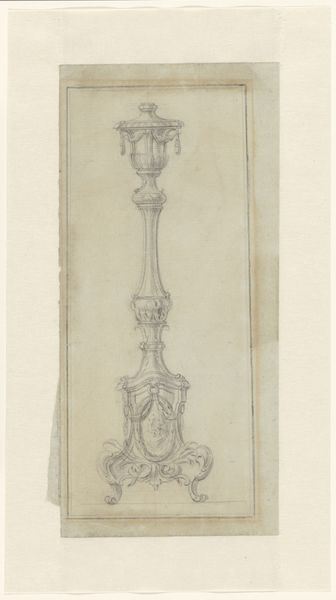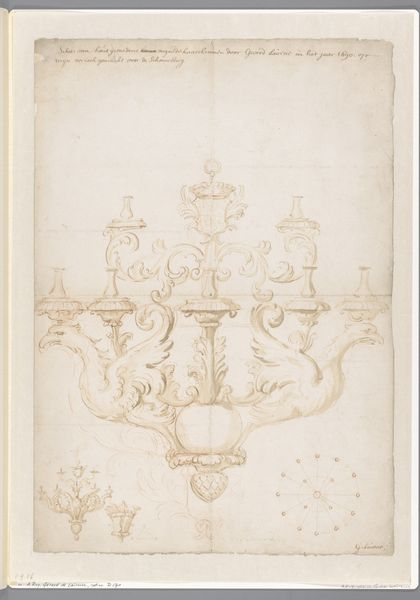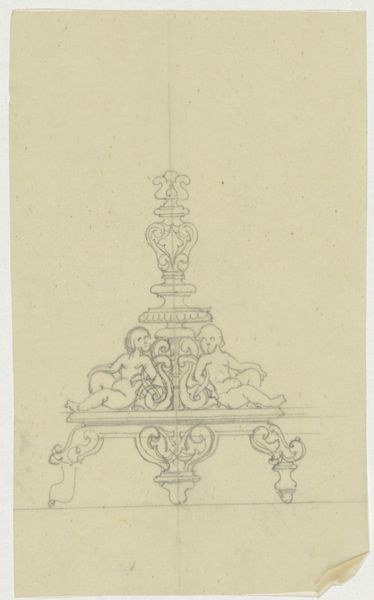
#
toned paper
#
light pencil work
#
old engraving style
#
personal sketchbook
#
ink drawing experimentation
#
pen-ink sketch
#
ink colored
#
sketchbook drawing
#
watercolour illustration
#
sketchbook art
Dimensions: height 110 mm, width 128 mm
Copyright: Rijks Museum: Open Domain
Curator: Look at this—Medaillon, dating roughly from 1830 to 1850, crafted by Firma Feuchère. It's a pencil and ink sketch on toned paper, a design bursting with ornate details. What's your initial take? Editor: Exquisite! It has a fragile beauty. All those fine lines suggesting a grand object—almost like capturing a fleeting thought on paper. Makes me wonder what object was in mind here. Curator: Indeed. There is such detail despite its sketch-like quality. Feuchère was a notable firm producing ornamental designs, catering to the tastes of a society enamored with opulence. These designs, although on paper, informed objects designed for elite consumption and cultural performance. Editor: Absolutely! I notice those cherubs perched atop and the little romantic vignette in the medallion's centre, and a crown right above it all—it gives a sense of playful power and light-hearted sophistication. I’d imagine it on a jewelry box, or as part of furniture. Something for a very fancy lady, perhaps? Curator: It's possible! Think about how these images functioned. This firm circulated designs like this, feeding a market for luxury goods that reinforced social hierarchies and, frankly, gendered expectations. The image itself participates in that theatre. Editor: That is really insightful. It does beg the question, though: Did they understand they were reinforcing or reflecting? Because when I look, I also imagine someone playfully just doodling the most complex and impractical design they could conjure, pushing against rules and boundaries. It has a touch of rebellion there! Curator: Perhaps both! Cultural productions rarely offer one simple answer, right? The market pushes towards replication, but also rewards the allure of a certain creativity or invention. Editor: Well, looking at the little stains, the uneven edges of the paper... it definitely speaks of creative chaos, or at least of experimentation. It shows it was a thought caught on the run, not a careful design for mass-manufacture. A one-off moment that history now allows us to appreciate. Curator: Precisely! A fleeting, beautiful thought preserved. It helps us consider the conditions from which objects are borne and to what end! Editor: Absolutely. A beautiful glimpse behind the curtain.
Comments
No comments
Be the first to comment and join the conversation on the ultimate creative platform.
